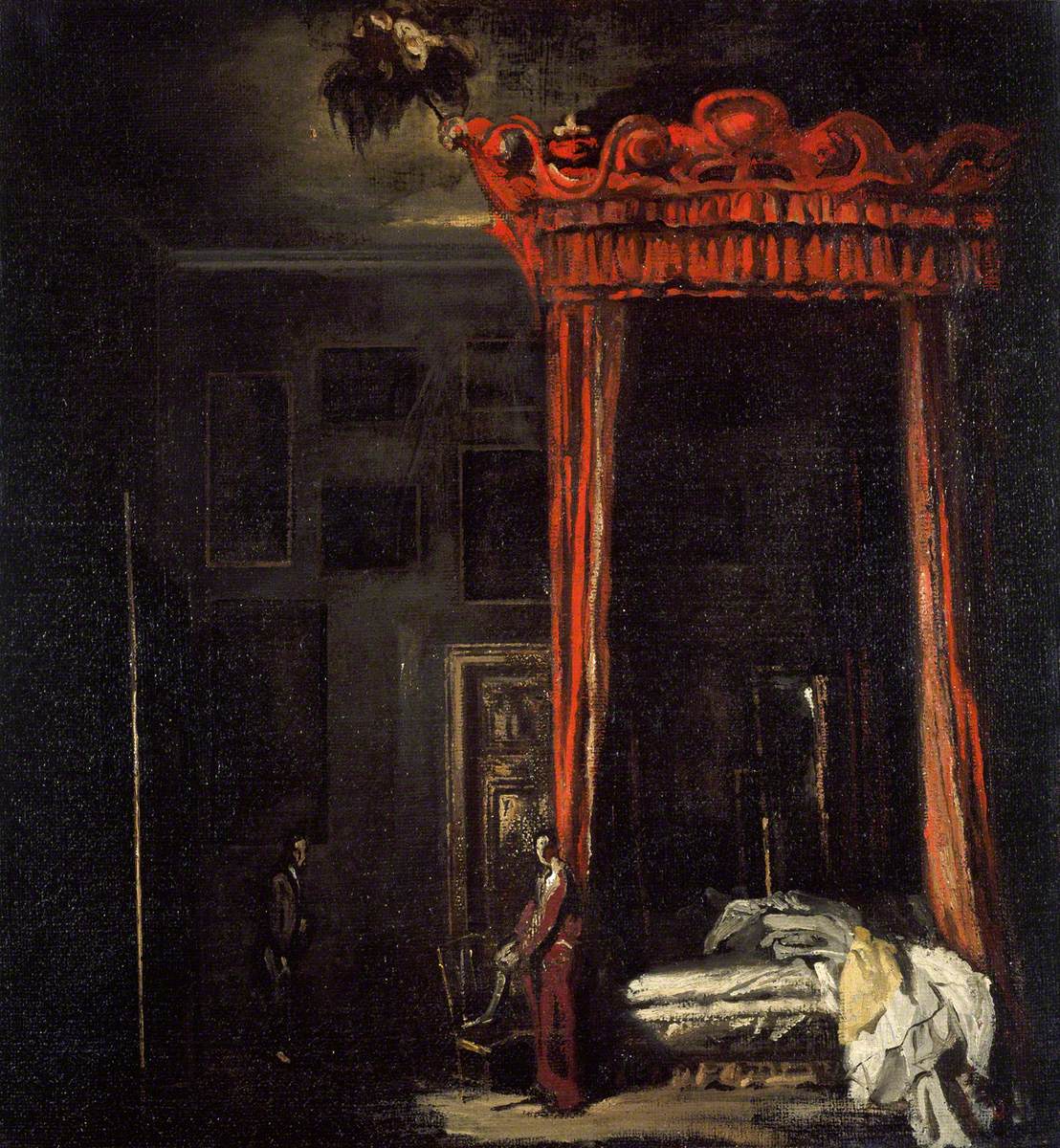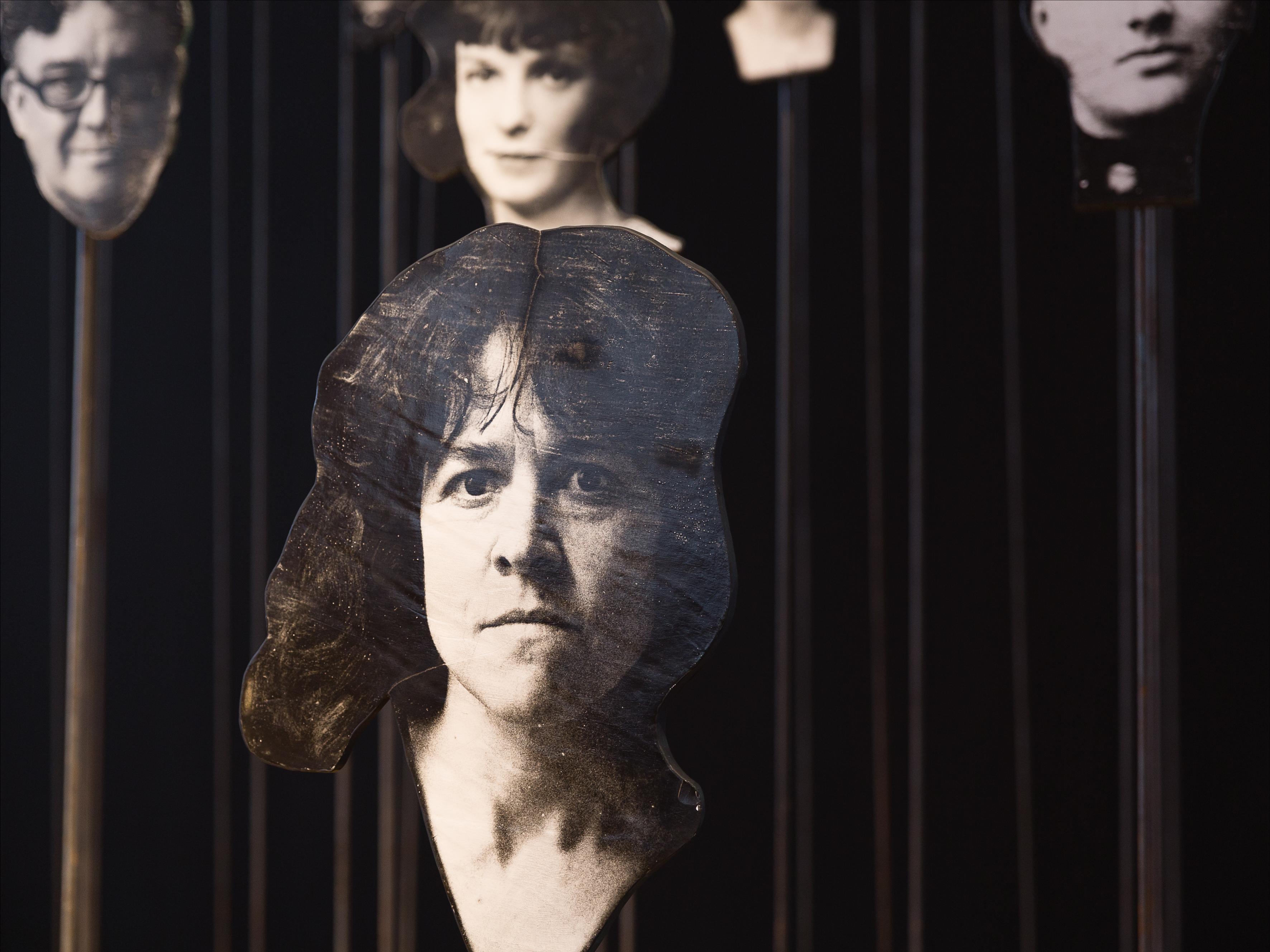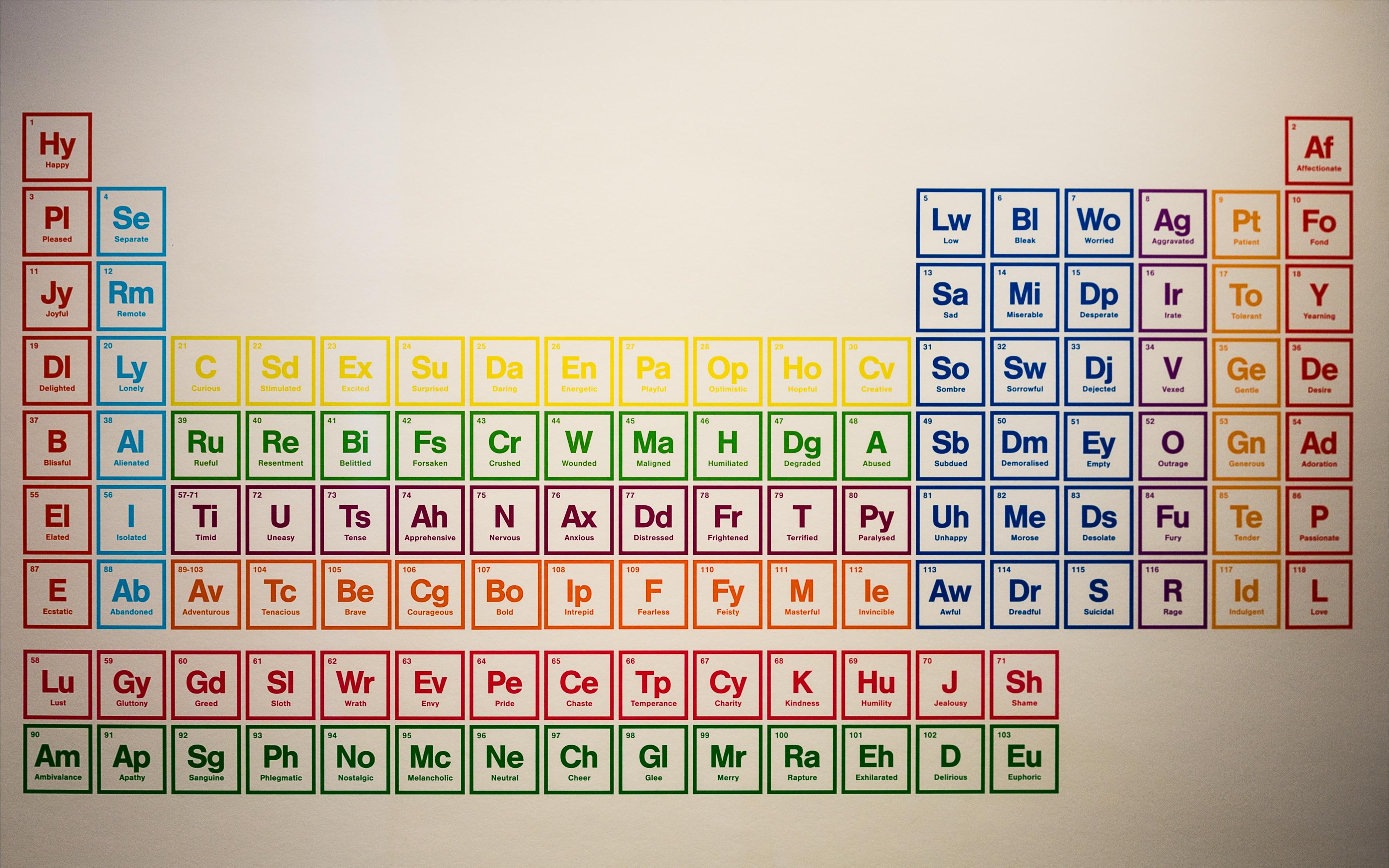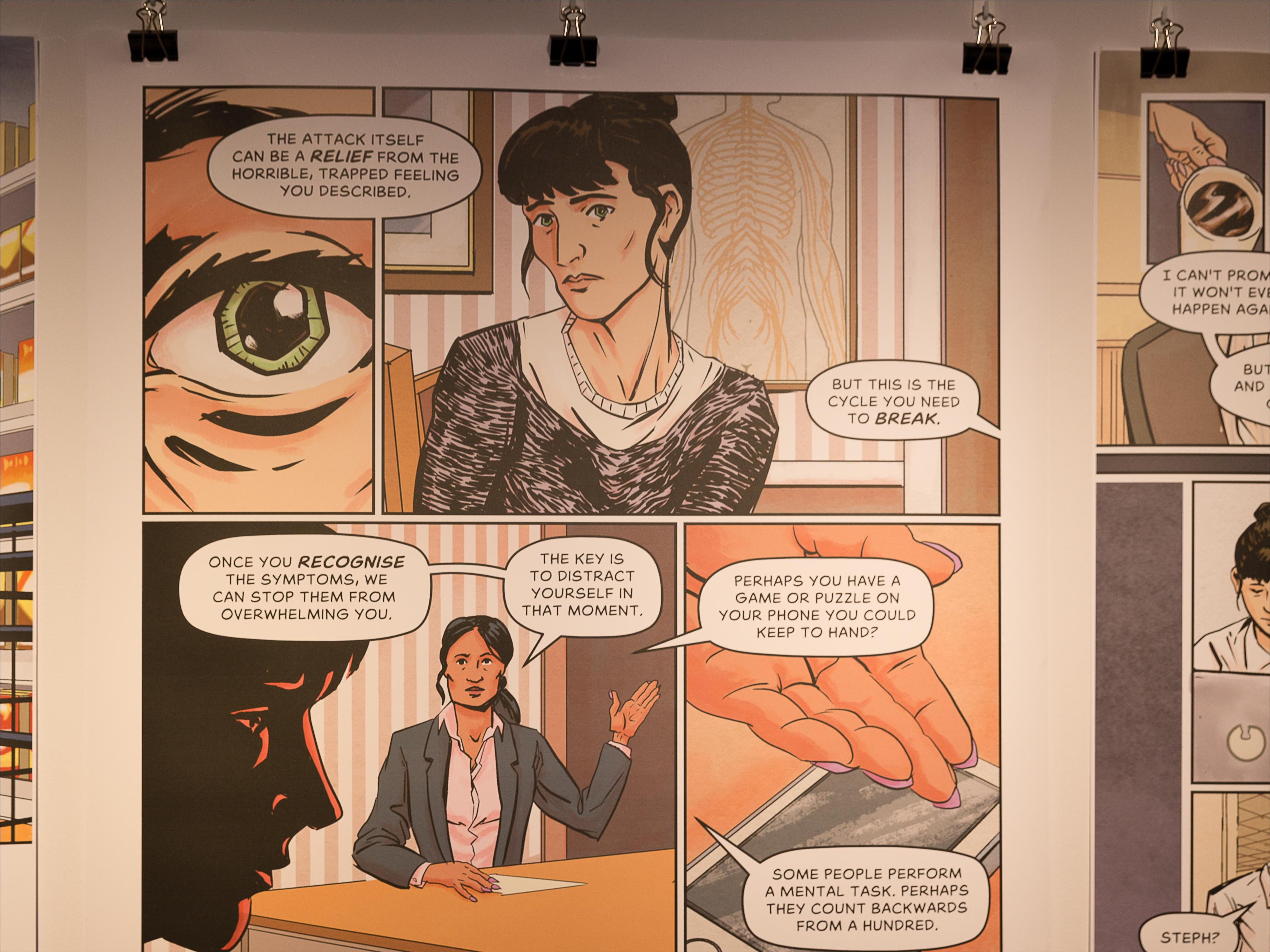Respiratory physician Lutz Beckert considers chronic obstructive pulmonary disease management, including the prevention of COPD, the importance of smoking cessation and pulmonary rehabilitation, and the lifesaving potential of addressing treatable traits. He also discusses the logic of inhaler therapy, moving from single therapy to dual and triple therapy when indicated, as well as other aspects of management
An Edinburgh art/health collision proves rich, raw and rewarding
An Edinburgh art/health collision proves rich, raw and rewarding

When you take a stab at visiting a major European city’s public art gallery without even Googling what’s on show, a hefty surprise usually awaits, writes New Zealand Doctor journalist Virginia McMillan on holiday in the UK
In Edinburgh, I unexpectedly came face to face with an undreamed-of diversity of views of the health system.
It was an example of what used to be known as the “busman’s holiday” as, similarly, I chanced upon the RCGP in London.
So little did I know about the wonderful old city of Edinburgh that the suburb Little France did not ring a bell. Eventually, I recalled having read about Mary, Queen of Scots.
Little France was so named because the Catholic queen and her troubled court were based there; the Royal Infirmary of Edinburgh later became a landmark. Now, a brand new children’s hospital is being built there and Edinburgh University’s clinical neuroscience department is joining it.
All this is relevant at the City Art Centre, where the current exhibition is entitled The Re(a)d Bed, Art & Therapeutic Design.
The title alludes to the draped, darkened room of the 1916 painting The Red Bed by Edinburgh artist James Pryde. After this gold-framed work had called to me to imagine a grim life as a patient, I noticed in the exhibition notes the name Norman Dott.
It turns out the remarkable Professor Dott trained in engineering before he tackled medicine; he went on to become the founder of neurology in Scotland.
I can only quote from a biography on the website of the Congress of Neurological Surgeons, otherwise you won’t believe how accomplished he was.
“Norman Dott...helped to develop anaesthesia in Edinburgh from 1918 to 1920, and introduced intratracheal techniques. He made original important contributions concerning the embryology of the bowel. In 1929, using sodium iodide, he was the first person in the United Kingdom to demonstrate an arteriovenous malformation of the brain by angiography...performed the first angiogram in the United Kingdom...
“Amongst other original clinical research activities were studies on congenital dislocation of the hip, cleft palate, cerebrospinal fluid circulation and its pathology, brain displacements and related cerebral ischemia, spinal cord compression, facial pain, the treatment of facial paralysis by extrapetrous nerve graft, and the use of hypothermia in cerebral surgery. He invented many instruments and pieces of surgical apparatus, from bowel clamps to operating tables, and designed operating theatres.”
The infirmary’s innovative spherical-shaped Dott Theatres are being demolished as it is turned into a learning hub but, for now, they live on in a weird way in the art centre.
I immersed myself in the sound and vision originally created by artists for performance in these theatres; in their words, an exploration of music therapy in the midst of the gravity and psychological effects of experiencing a full dome environment.
Next, I listened to the digital narration of an artist/filmmaker depicting an altered state, not quite present although among people. I imagined moving invisibly among them in the accompanying eerie, black-and-white exhibit.
A provocatively reworked periodic table invited me to identify my state of wellbeing, and to consider the widest possible range of emotional states.
Another work took a “comic book” approach to consultations and healing for someone with a dissociative neurological condition. New visions of the ward bedside were also presented.
The exhibition runs until 8 July, providing a hint at the extraordinary work the local health service (NHS Lothian) supports, out of a desire to see art and design benefit its patients.
See next week's blog when Virginia breakfasts at the RCGP cafe and discovers an exhibition on the role South Asian doctors have played in meeting a doctor shortage
- Log in to post comments








![Barbara Fountain, editor of New Zealand Doctor Rata Aotearoa, and Paul Hutchison, GP and senior medical clinician at Tāmaki Health [Image: Simon Maude]](/sites/default/files/styles/thumbnail_cropped_100/public/2025-03/Barbara%20Fountain%2C%20editor%20of%20New%20Zealand%20Doctor%20Rata%20Aotearoa%2C%20and%20Paul%20Hutchison%2C%20GP%20and%20senior%20medical%20clinician%20at%20T%C4%81maki%20Health%20CR%20Simon%20Maude.jpg?itok=-HbQ1EYA)
![Lori Peters, NP and advanced health improvement practitioner at Mahitahi Hauora, and Jasper Nacilla, NP at The Terrace Medical Centre in Wellington [Image: Simon Maude]](/sites/default/files/styles/thumbnail_cropped_100/public/2025-03/2.%20Lori%20Peters%2C%20NP%20and%20advanced%20HIP%20at%20Mahitahi%20Hauora%2C%20and%20Jasper%20Nacilla%2C%20NP%20at%20The%20Terrace%20Medical%20Centre%20in%20Wellington%20CR%20Simon%20Maude.jpg?itok=sUfbsSF1)
![Ministry of Social Development health and disability coordinator Liz Williams, regional health advisors Mary Mojel and Larah Takarangi, and health and disability coordinators Rebecca Staunton and Myint Than Htut [Image: Simon Maude]](/sites/default/files/styles/thumbnail_cropped_100/public/2025-03/3.%20Ministry%20of%20Social%20Development%27s%20Liz%20Williams%2C%20Mary%20Mojel%2C%20Larah%20Takarangi%2C%20Rebecca%20Staunton%20and%20Myint%20Than%20Htut%20CR%20Simon%20Maude.jpg?itok=9ceOujzC)
![Locum GP Helen Fisher, with Te Kuiti Medical Centre NP Bridget Woodney [Image: Simon Maude]](/sites/default/files/styles/thumbnail_cropped_100/public/2025-03/4.%20Locum%20GP%20Helen%20Fisher%2C%20with%20Te%20Kuiti%20Medical%20Centre%20NP%20Bridget%20Woodney%20CR%20Simon%20Maude.jpg?itok=TJeODetm)
![Ruby Faulkner, GPEP2, with David Small, GPEP3 from The Doctors Greenmeadows in Napier [Image: Simon Maude]](/sites/default/files/styles/thumbnail_cropped_100/public/2025-03/5.%20Ruby%20Faulkner%2C%20GPEP2%2C%20with%20David%20Small%2C%20GPEP3%20from%20The%20Doctors%20Greenmeadows%20in%20Napier%20CR%20Simon%20Maude.jpg?itok=B0u4wsIs)
![Rochelle Langton and Libby Thomas, marketing advisors at the Medical Protection Society [Image: Simon Maude]](/sites/default/files/styles/thumbnail_cropped_100/public/2025-03/6.%20Rochelle%20Langton%20and%20Libby%20Thomas%2C%20marketing%20advisors%20at%20the%20Medical%20Protection%20Society%20CR%20Simon%20Maude.jpg?itok=r52_Cf74)
![Specialist GP Lucy Gibberd, medical advisor at MPS, and Zara Bolam, urgent-care specialist at The Nest Health Centre in Inglewood [Image: Simon Maude]](/sites/default/files/styles/thumbnail_cropped_100/public/2025-03/7.%20Specialist%20GP%20Lucy%20Gibberd%2C%20medical%20advisor%20at%20MPS%2C%20and%20Zara%20Bolam%2C%20urgent-care%20specialist%20at%20The%20Nest%20Health%20Centre%20in%20Inglewood%20CR%20Simon%20Maude.jpg?itok=z8eVoBU3)
![Olivia Blackmore and Trudee Sharp, NPs at Gore Health Centre, and Gaylene Hastie, NP at Queenstown Medical Centre [Image: Simon Maude]](/sites/default/files/styles/thumbnail_cropped_100/public/2025-03/8.%20Olivia%20Blackmore%20and%20Trudee%20Sharp%2C%20NPs%20at%20Gore%20Health%20Centre%2C%20and%20Gaylene%20Hastie%2C%20NP%20at%20Queenstown%20Medical%20Centre%20CR%20Simon%20Maude.jpg?itok=Z6u9d0XH)
![Mary Toloa, specialist GP at Porirua and Union Community Health Service in Wellington, Mara Coler, clinical pharmacist at Tū Ora Compass Health, and Bhavna Mistry, specialist GP at Porirua and Union Community Health Service [Image: Simon Maude]](/sites/default/files/styles/thumbnail_cropped_100/public/2025-03/9.%20Mary%20Toloa%2C%20Porirua%20and%20Union%20Community%20Health%20Service%20in%20Wellington%2C%20Mara%20Coler%2C%20T%C5%AB%20Ora%20Compass%20Health%2C%20and%20Bhavna%20Mistry%2C%20PUCHS%20CR%20Simon%20Maude.jpg?itok=kpChr0cc)